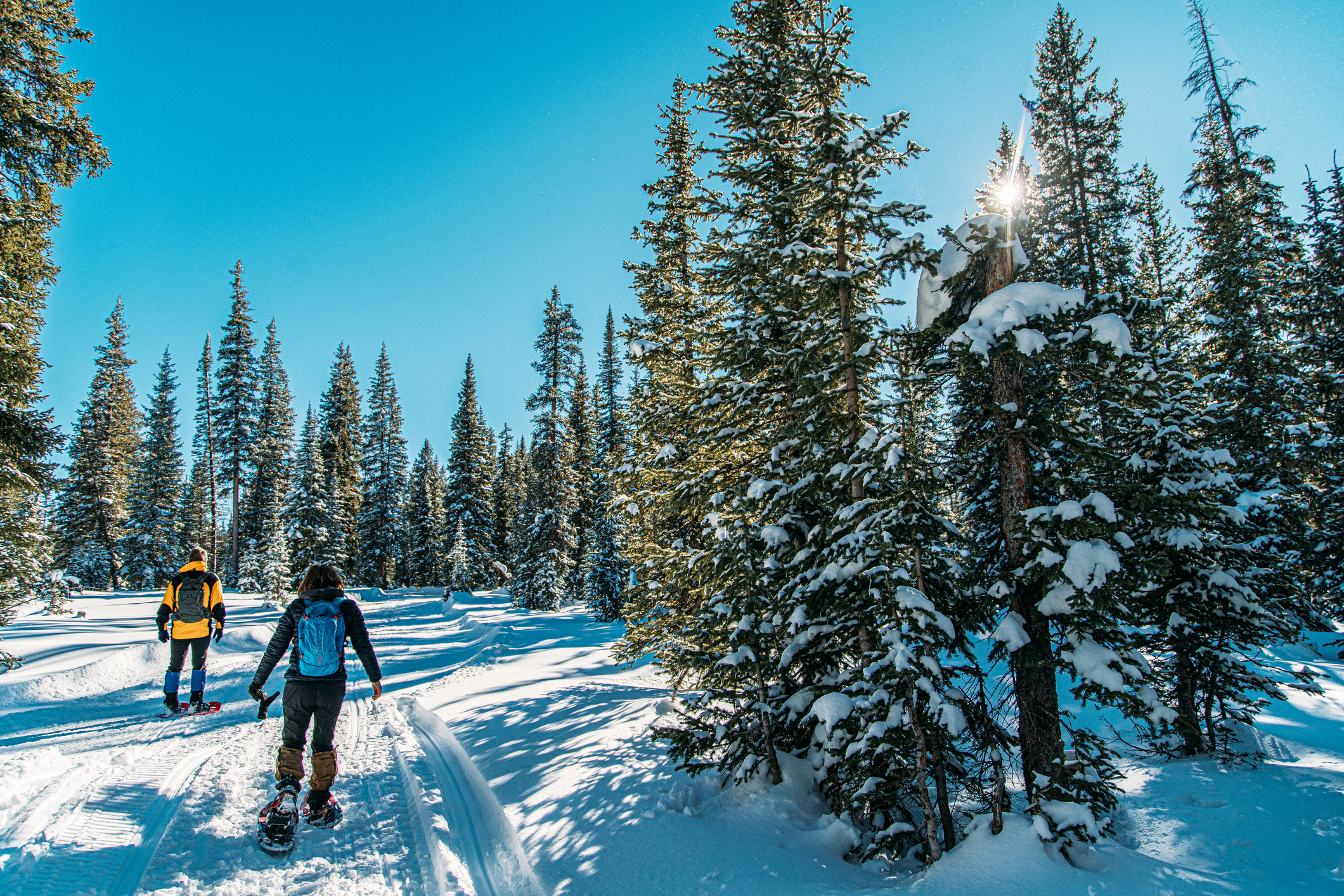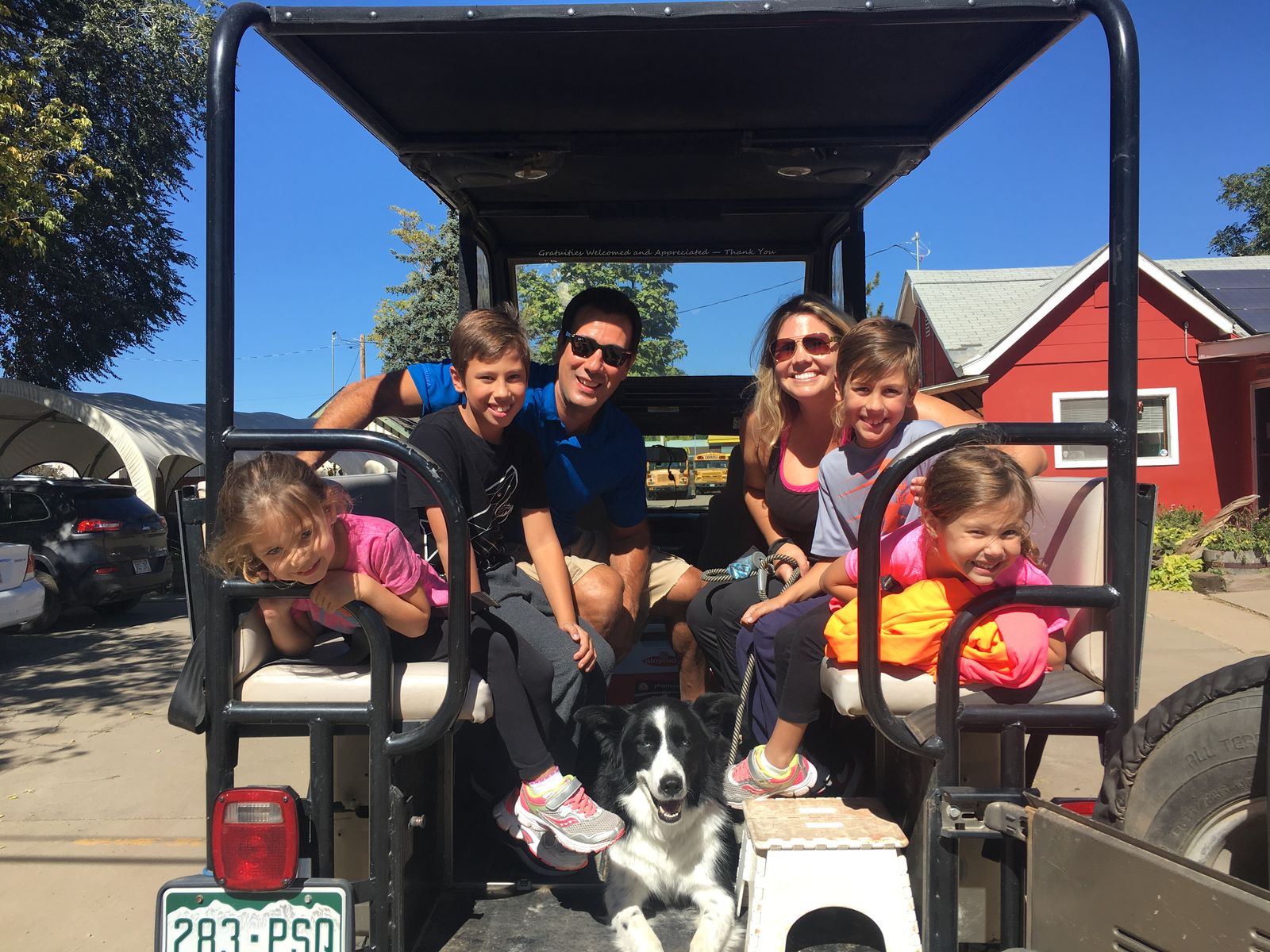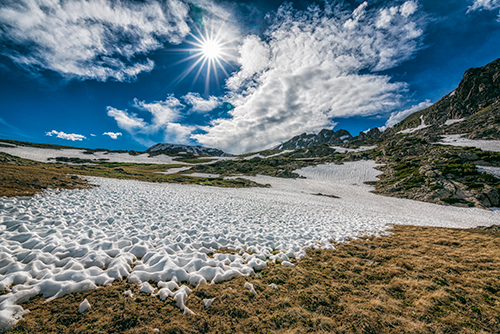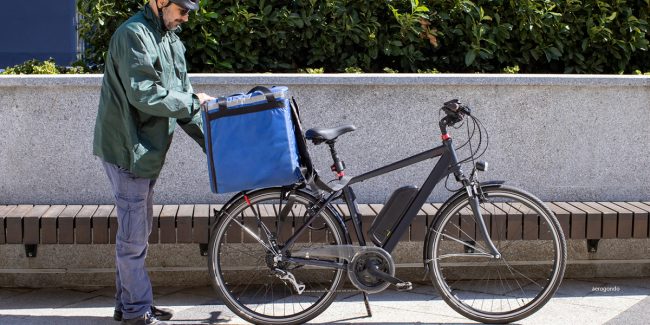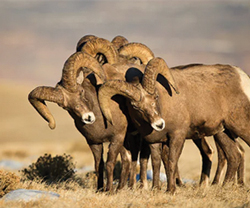Your Guide to Snowshoeing in Colorado
By Emily Krempholtz
Snowshoeing is one of the best ways to get outside and explore the mountains in the winter. It’s great exercise and there’s less of a learning curve than skiing or snowboarding (not to mention, you don’t have to pay for a lift pass!). For the beginner, snowshoeing can seem daunting, but we’re here to break it all down for you so you can get out there and start having some winter adventures.
What Kind of Gear Do I Need for Snowshoeing?
First and foremost—and this may come as a surprise—you’ll need a pair of snowshoes. It’s important for you to know that not all snowshoes are created equal. When you’re on the hunt for the perfect pair, you’ll want to keep in mind a few details.
Weight
Snowshoes are sized according to your weight, not your height or foot size. Snowshoes work by dispersing your weight over a larger area than your footprint, so the more you weigh (including your gear!), the larger your snowshoes need to be to keep you floating on top of the snow.
Your Weight Your Snowshoe Size
Up to 80 lbs 20 inches
Up to 125 lbs 21 inches
Up to 150 lbs 22 inches
Up to 175 lbs 25 inches
Up to 220 lbs 30 inches
> 220 lbs 35 inches
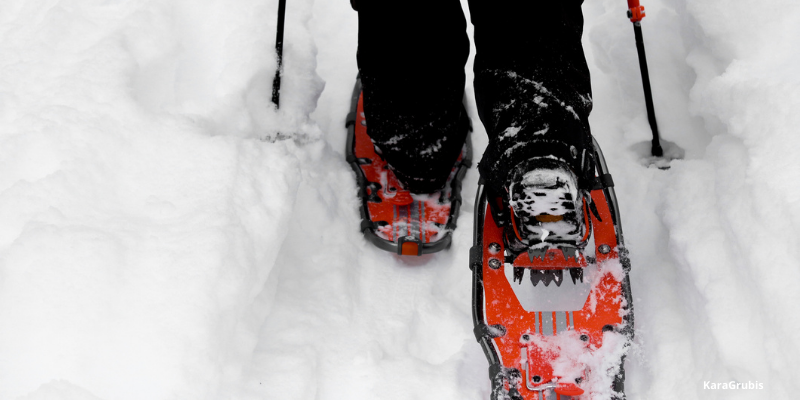
Terrain
Most snowshoes fall into one of three types: flat terrain, rolling terrain, or mountain terrain. The more steep and icy your terrain, the more aggressive the crampons or spikes on the bottom of your snowshoes will be, and the higher the platform under your heel will be. In addition, different types of snowshoes work differently in various stages of terrain. For example, longer snowshoes are better for the powdery snow we so often see here in the Rocky Mountains, whereas a smaller snowshoe is more suitable for steep, icy, or brushy terrain. You can also get special snowshoes made for running, with designs that focus more on flexibility than flotation.
Another piece of gear that is essential for snowshoeing—especially here in Colorado where the terrain is often far from flat—are poles. Snowshoe poles help you stay balanced, and also give your arms a bit of a workout, and if you have a set of poles you already use for hiking or skiing, you can easily adapt them for snowshoeing as well. The most important things to remember are that you want your poles to be adjustable so you can shorten them when you’re going uphill and lengthen them when you’re on the descent, and that you’ll want to make sure you have snow baskets. These little babies are usually removable, and they serve as snowshoes for your poles, spreading out the footprint so your poles don’t sink all the way into deep snow.
Another important part of the gear conversation is clothing. Snowshoes are made to be used with essentially any type of footwear, but we strongly recommend you wear shoes or boots that will keep your feet warm, are comfortable for physical activity, and are waterproof or water-resistant. Good socks are a must, too—and it’s never a bad idea to keep an extra pair in your backpack in case they get wet. You might also want to invest in a pair of gaiters, which look a bit like leg warmers that go over your boots and calves to form a seal that keeps your legs dry and snow out of your boots.
As always in Colorado, you should be prepared for all types of weather, and that means multiple layers are key so you can take them off or put them back on as needed. You’ll probably also want to wear a hat and gloves, and pack a pair of sunglasses so you don’t get blinded by the sun on that pristone snow. Hand warmers and foot warmers wouldn’t be too bad of an idea, either.
What If I Don’t Have Any of This Stuff?
If you don’t have snowshoeing equipment, you can rent it! Most outdoor stores—from REI to your neighborhood sporting goods shop—rent snowshoes, poles, and other necessary equipment if you want to try out the sport before you invest in your own gear. If you’re staying at a resort or find yourself near a dude ranch or adventure center, they probably offer snowshoe rentals as well as guided tours. A guide will show you some amazing sights from the eyes of a local, and will even help you sort out some of the growing pains that come from learning to snowshoe.
Snowshoe Safety Tips
In addition to gear, you want to make sure you always carry a pack with your essentials, like water, snacks, any navigation tools you might need, a first aid kit, extra clothing or socks, and sunscreen (yes, even in winter!). You might not feel as thirsty in the winter as you do during summertime in the mountains, but it’s important for you to remember to stay hydrated before, during, and after your snowshoe adventure. Your pack might feel a little bigger during the winter, but it’s because there’s simply more that you need, from avalanche gear to the snowshoes themselves. While you’re packing that bag, you also might want to invest in a small gear repair kit, or make your own—it’s one thing for some of your gear to break on a summer hike when you can just walk back to the car, but if your snowshoe breaks when you’re miles from the trailhead, there’s nothing worse than having to wade back in waist-deep snow. Even having a little duct tape in your pack to fix a puncture hole or repair a binding strap until you can get home and make a better repair will make all the difference.
Here in Colorado, winter sports always carry with them an extra level of risk from Mother Nature herself. Creekbeds, rock wells, and trees are often hidden by snow, and falling into them is a nasty and sometimes dangerous surprise, so learn to be on the lookout and read the snow around you. Sadly, most people who are killed or injured in avalanches are the very people who triggered the avalanche in the first place. If you have any intention of going off trail into the backcountry, you should really think about taking a course in avalanche safety, or at least brushing up on backcountry practices before you go. At the very least, check up on avalanche conditions before you go, pay attention to your surroundings for signs of unstable snow, and make sure you pack a beacon, probe, and snow shovel. It could save your life.
Where to Snowshoe in Colorado
Now that we’ve got all the logistics squared away, let’s get snowshoeing! If it’s your first time out, you’ll probably want to stick to flatter terrain and established trails while you get a feel for snowshoeing. But once you get the hang of that kick-step and stop stepping on your own snowshoes, you’ll be ready to take it up a notch.
Some of the most popular spots for snowshoeing in Colorado include:
Rocky Mountain National Park (Estes Park)
While trails like Bear Lake are often crowded during the warmer months, winter is a great time to discover them on snowshoes. This short, mostly flat trail around Bear Lake is a great way for beginners to get the hang of things, and if you’re looking to challenge yourself further, you can always extend your trek up to Nymph Lake, which will let you get a feel for snowshoeing at an incline. Rocky Mountain National Park is home to hundreds of miles of hiking trails, great for snowshoers of virtually any level of experience. If you’re unsure where to get started, swing by a ranger station on your way into the park to ask about conditions, weather, and trail recommendations.
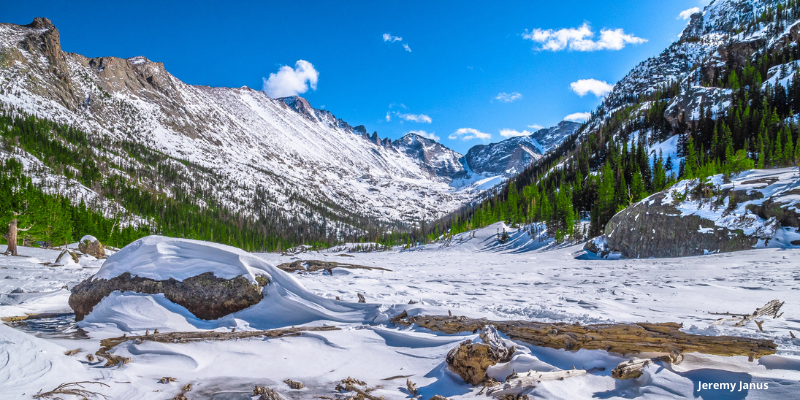
Indian Peaks Wilderness Area (Nederland)
This popular hiking spot is another great place to snowshoe. From the Hessie Trailhead, you’ll be able to break in your snowshoes as you make your way up to beautiful Lost Lake. You could also try the Lake Isabelle Trail, where you’ll see the Isabelle Glacier and a gorgeous alpine lake, or the nearby Brainard Lake Trail, which will show off stunning views of the Indian Peaks along one of the best winter snowshoe trails in the region.
Hanging Lake (Glenwood Springs)
This is another one of those trails that is jam-packed with hikers during the summer, though their reservation system over the past few years has made it easier to avoid crowds. Snowshoeing Hanging Lake is vigorous and exhausting, but it’s a breathtaking view and a true Colorado classic.
Rabbit Ears Pass (Steamboat Springs)
Just outside of Steamboat Springs, Rabbit Ears Pass is a mecca for Nordic skiing and snowshoeing, with great trail options for snowshoers of any level.
Ice Park Trail (Ouray)
There’s a reason that Ouray is often called the Switzerland of America, and what better time to see it than in the winter, on snowshoes? Trails are practically endless here, but one great one is the Ice Park Trail, which features a bit of a climb and some truly stunning views of Uncomphagre Gorge, where you might even get a bird’s eye view of some of the ice climbers who make their way to the top each winter.
Proper Snowshoeing Etiquette
When possible, try to avoid trails frequented by other types of recreationists. The crampons on snowshoes can cause serious disruption to a groomed trail, so one wrong step by a snowshoer could ruin a cross-country skier’s tracks. If you do use a trail that skiers frequent, make sure you don’t step in their tracks, and stay to the far left of the trail if possible. It’s your responsibility as a snowshoer to cede the right of way to skiers and snowmobiles, and just like hiking, if you’re headed downhill, always yield to the uphill snowshoer.
If you’re snowshoeing in a group, it’s also good etiquette to take turns being in front. Breaking in a trail from fresh snow is hard work, so it’s important to rotate so no one gets burned out.
Why Snowshoe?
There are some parts of Colorado that just aren’t accessible by hiking or by car until the snow melts, but once you get into snowshoeing, you’ll be able to see a whole new side of our state—and yeah, there are some startup costs if you don’t already own any of the gear, but when all is said and done, snowshoeing is a much more affordable hobby than a season pass at a ski resort! Besides being fantastic exercise, snowshoeing is a great way to get some solitude and take in some nature in a way you’ve never seen before. Popular areas like Rocky Mountain National Park, which are swamped with visitors during the summer, are often all but empty during the winter, so you’ll be able to have its most beautiful attractions all to yourself. So get yourself a pair of snowshoes and start adventuring. Colorado awaits!

